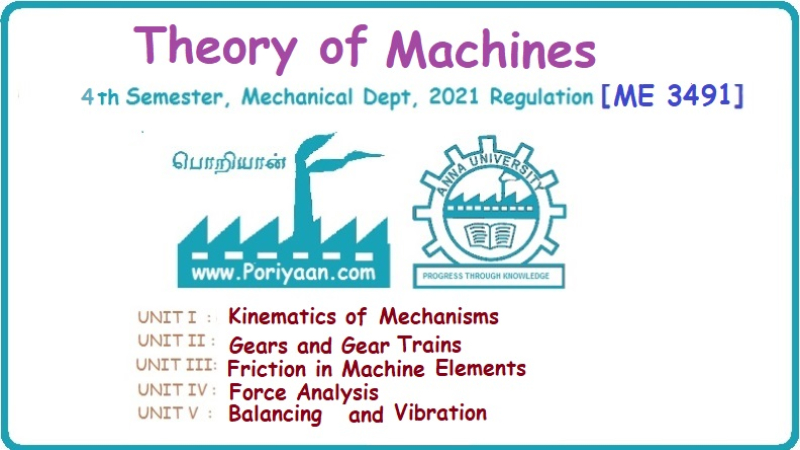Theory of Machines: Unit III: Friction in Machine Elements
phenomenon of creep in belts
Friction in Machine Elements - Theory of Machines
Presence of friction between pulley and belt causes differential tension in the belt.
PHENOMENON OF CREEP IN BELTS • Presence of friction between pulley and belt causes differential tension in the belt. This differential tension causes the belt to elongate or contract and create a relative motion between the belt, and the pulley surface. This relative motion between the belt and the pulley surface is created due to the phenomenon known as elastic creep. • We know that the tension on the tight side of a belt drive is more than the tension on the slack side. As a result of this, the belt is stretched more on the tight side as compared to the slack side. Therefore, the driver pulley receives more length of the belt and delivers less. Hence, the belt creeps (jumps) forward. On the other hand, the driven pulley receives a shorter length of the belt and delivers more. Thus the belt creeps (jumps) backward. This phenomenon is called creeping of belt. • Definition: The creep may be defined as the relative motion between the belt and the pulley surface due to unequal stretching of the two sides of the drive. • Effect: The effect of creep is to reduce the speed of the driven pulley and consequently the power transmitted. Let σ1 = Stress in the belt on the tight side, σ2 = Stress in the belt on the slack side, and E = Young's modulus of the belt material. Velocity ratio, considering creep, is given by Note In practice the combined effect of slip and creep is called simply slip and the combined effect should not exceed three percent.1. Effect of Creep on Velocity Ratio

Theory of Machines: Unit III: Friction in Machine Elements : Tag: : Friction in Machine Elements - Theory of Machines - phenomenon of creep in belts
Related Topics
Related Subjects
Theory of Machines
ME3491 4th semester Mechanical Dept | 2021 Regulation | 4th Semester Mechanical Dept 2021 Regulation
